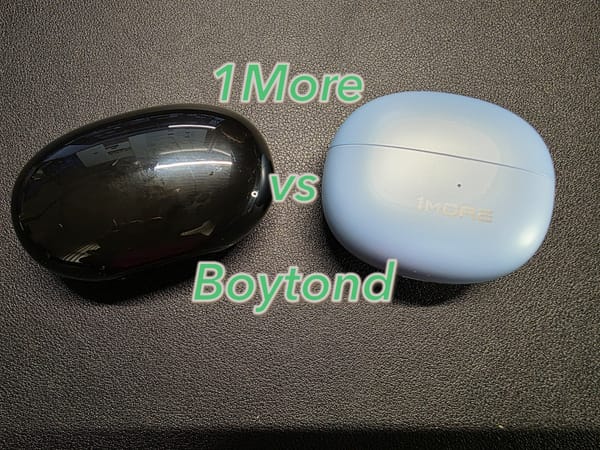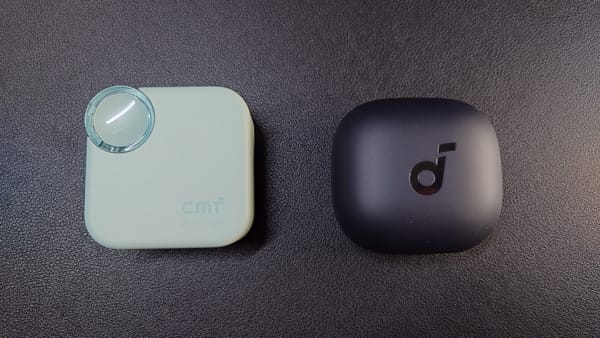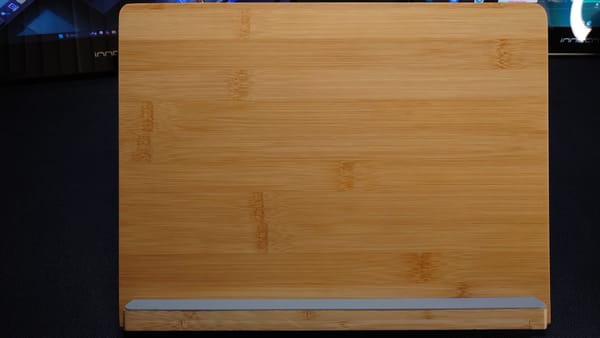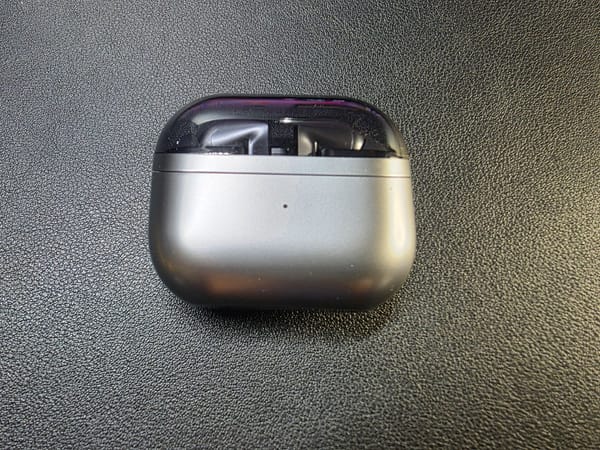Creative Aurvana Ace Mimi
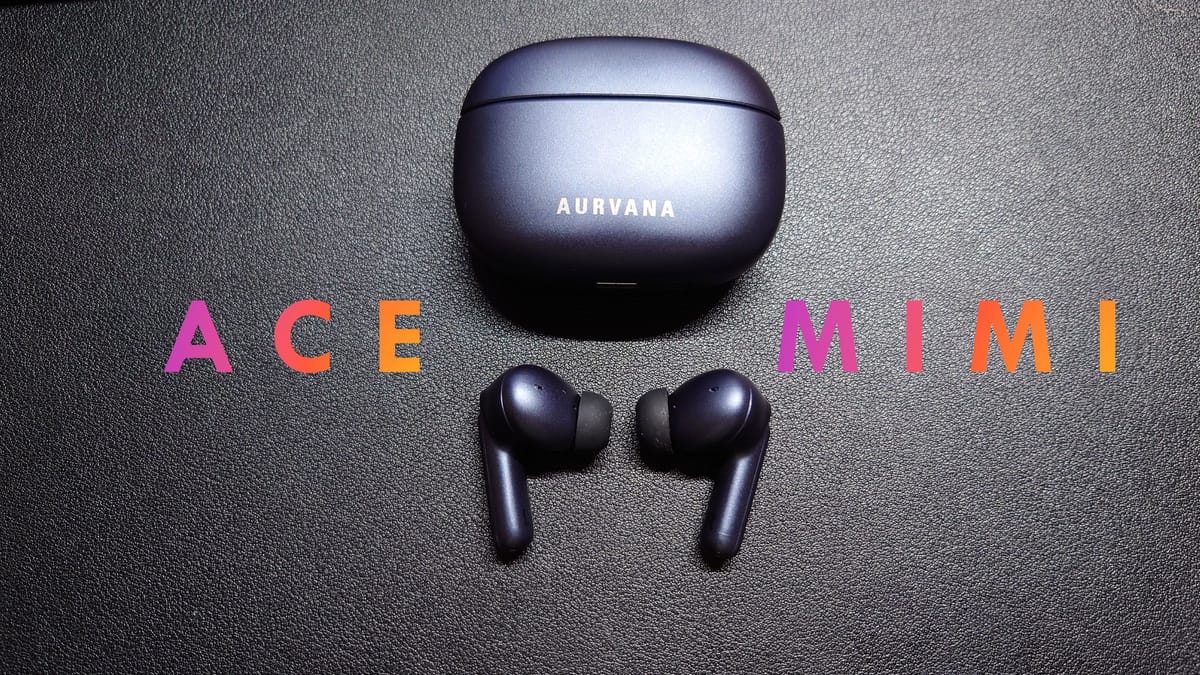
Recently, I acquired and reviewed the AirPods Pro 2 as hearing aids. Of course, I also considered them as listening devices for music and video, and they do quite well in that regard. However, for many weeks, the earbuds I really wanted to try were the latest iteration of the Creative Aurvana line. I had the Ace 2 on my Amazon wish list for quite a while but never pulled the trigger on them. I have a lot of audio gear, so I didn't need them. I was very interested in hearing the micro-electromechanical (MEMS) drivers as I'd read a bit on them, and they seemed like the next big thing for headphones and earphones.
An AI assist blurb on MEMS:
"MEMS drivers are tiny devices that combine mechanical and electrical components on a micro scale, often used in audio technology to improve sound quality in products like earbuds and smart devices. They offer advantages such as miniaturization, energy efficiency, and precise sound reproduction compared to traditional drivers."
The Creative Aurvana Ace Mimi debuted this year, with the extra advantage of having sound personalization using functionality from the Mimi Hearing Test app which has been brought over to Creative's app. I've used Mimi before, along with a few other personalization apps. It gives you a hearing test and based on your hearing, it personalizes the sound of the earbuds for you. as I have hearing loss in my left ear, personalization apps are important for me if I'm using earbuds as I can't wear my hearing aid with earbuds. Adding Mimi to the Ace was enough to push me over the edge so I pre-ordered them.
The Creative line is not known for being a luxury line. They make solid audio products at reasonable mass-market prices. I'd used a pair of Creative Bluetooth earbuds many years ago - before the pandemic - and I'd liked them quite a bit. They were excellent for their price point. Creative continues this approach with the Ace. They don't have a ton of extra features; you can modify the level of ANC and transparency and there is an EQ. They don't support AptX, but do support LDAC, LC3 and Bluetooth LE. There is no in-ear detection. The notable feature here is the built-in Mimi functionality; this sets them apart from the other products in the Aurvana Ace line. The case isn't particularly fancy; it's very plasticky. But it allows for wireless charging, a feature I consider nearly essential in daily use earphones as I have wireless chargers around the house for easy charging. The case is also not especially compact. It's a little bit bigger than the AirPods Pro 2 case. The inside has that shiny finish from the Ace 2, but it's in a more low-key black chrome instead of the showy copper. There are 4 additional sets of tips in the box, but I found the tips that were pre-installed worked fine for me. There is also the requisite cable in the box. You probably have a box full of them.
The noise canceling on these earbuds is not a selling point, but it may not be at the top of your priority list if you are looking at these. The noise canceling is very average. It successfully quiets the sound of my central heating, but on most days, that's really all the noise canceling I need. They are typical stem-style buds with touch controls. I found the touch controls frustrating and generally resolved to use the controls on my tablet instead. I paired these to my Samsung Galaxy Tab S9 Ultra, which has LDAC, but not any advanced AptX codecs. I used them primarily in the default AAC mode but did try them in Bluetooth LE mode. It supposedly enhances sound quality with better energy efficiency, but I didn't really notice any significant difference.
I will spare you the suspense on the Mimi personalization aspect of these earphones: it was a disappointment. There is some improvement for me in terms of bringing up frequencies for my left ear, but it wasn't as effective for me as SoundID, much less other applications I've used to modify frequencies for my left ear. I do prefer to have it on, but I think the implementation here is really aimed at pumping up higher frequencies as we tend to lose those over time through the normal aging process. It isn't really focused here on hearing augmentation. And that's fine; these are mass-market products that don't claim to do anything special for those with hearing challenges.
But did I notice any significant difference in terms of sound compared to my other commonly used earbuds? I use my Tab S9 for a lot of content consumption like YouTube and music with Qobuz or YouTube Music. Before the Ace Mimi, I alternated between the Samsung Galaxy Buds 2 Pro and the Technics AZ80. But I had those AirPods, so I did a lot of comparison against them. I like the way the Buds 2 Pro fit in my ears and I like the noise canceling on the AirPods. I went back and forth between the AirPods and the Ace Mimi quite a bit. They have a lot of similarities in their sound. In the end, I detect a bit more space in the sound with the Ace Mimi. I could more easily identify and isolate instruments in the mix than I could with the AirPods. I also had more bass with the Ace Mimi and I value bass as it anchors me in a song. But you don't want too much so that it overwhelms the midrange as I need midrange, especially as a musician when I'm learning music. I learn bass first, so that's important to me, but I need to hear keyboards and vocals if it's a song I'm learning to play for church. Both earbuds are sensitive enough that I can tell the difference in quality from listening to music in high-quality in Qobuz vs. listening to the FLAC files.
But when I compared the Ace Mimi against the AZ80, the Ace Mimi sounded heavier in the bass. At first, I would have characterized it as "muddier", but as I kept going back and forth, I realized that separation I'd noticed with the AirPods Pro 2 was still there when comparing against the AZ80. There was more space in the mix. I could also distinguish them with the AZ80, but everything felt closer together. Out of the box tuning for both has the Ace Mimi set to a more bass-heavy sound with the AZ80 having a bit more treble and more presence in the midrange. The Ace Mimi with their better staging nevertheless felt a bit more veiled somehow.
In a way, after listening to both of them extensively, I felt more disappointed in both of them. I used the EQ in the Creative app to bring up the midrange and at that point, I felt the Ace Mimi sounded better than the AZ80. Well, maybe not better, just different? There is a still a fullness to the Ace Mimi has even with the EQ adjustment that isn't quite there with the AZ80.
I am not a professional audio reviewer, and I'm handicapped a bit by my unbalanced hearing. Mimi does help a little with adding more balance, but it's not as noticeable as SoundID and definitely not enhanced enough for me to use without my left-right balance app on Android, SpotEQ31. Nevertheless, I find that the AZ80 is brighter but certainly more balanced than the Ace Mimi. The Ace Mimi have better separation, and with some EQ adjustments, they are perhaps a bit more pleasant of a listen for me, as someone whose bias is towards low end as long as midrange and treble are present and identifiable. When listening to spoken word, I greatly prefer the Ace Mimi; the warmth and fullness is more enjoyable.
Both earphones have excellent microphones for quiet environments. The Ace Mimi has a bit cleaner sound with less ambient background noise, but voices come across clear and easily understandable using both. The Ace Mimi record a bit quieter than the AZ80, but you hear more environmental noise with the AZ80. The reduction in ambient noise may be due to the stem-style design that puts the microphones ever so much closer to your mouth.
I find the Ace Mimi somewhat more comfortable than the AZ80; the AZ80 are large and fill my ear holes completely. I always feel that they're there. And although I don't really care for stem-style earphones, the Ace Mimi are more comfortable. I don't find them as comfortable as the Galaxy Buds 2 Pro, but they haven't caused me any discomfort over time.
I like both. In a vacuum, both sound good and I could use both with no reservations. The AZ80 have more features as would be expected from their higher price ($200 vs. $130 for the Ace Mimi) and the ability to connect to 3 devices simultaneously is unmatched by anything else that isn't from Technics. The AZ80's noise canceling is also better. I'd travel with the AZ80 without hesitation. But when I'm at home in my quiet living room and want to listen to podcasts, watch videos, or listen to music, I'd reach for the Ace Mimi.
To purchase (not an affiliate link):
https://us.creative.com/p/headphones-headsets/creative-aurvana-ace-mimi
YouTube review:
